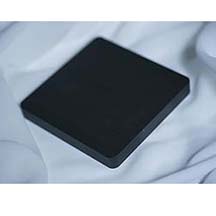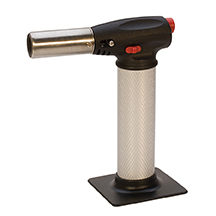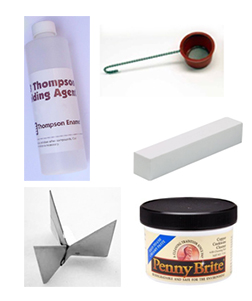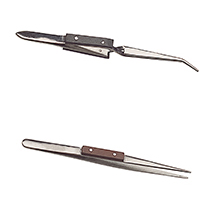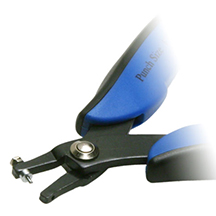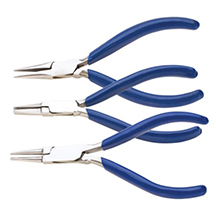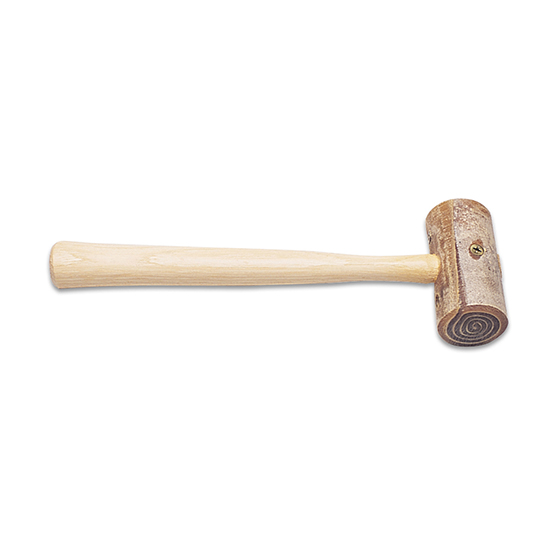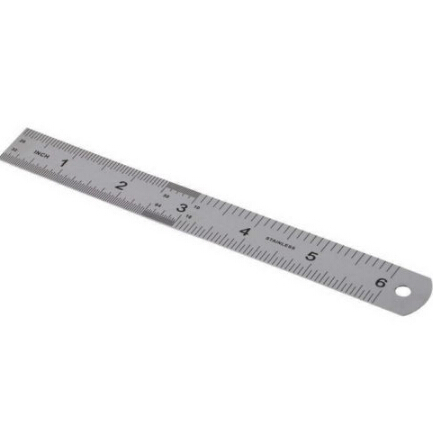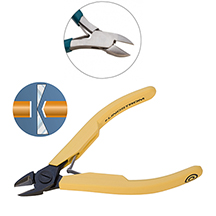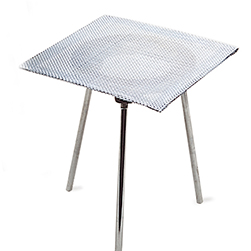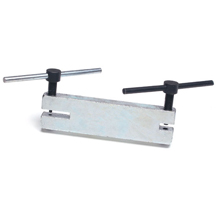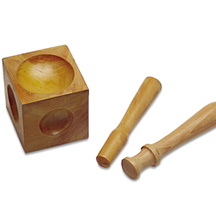
Silver on Enamel
- Level
- Beginner
- Session
- 3 hours
- Description
- Like the look of enameled silver but don’t like the expense? Here is a way to create a jewel effect on copper using silver foil and transparent enamels. We will cover all the basics of enameling and how to achieve a vibrant effect.
Tools
Some tools will be provided by the instructor. Please refer to your registration.-
Bench Block
Steel or Anodized aluminum - Used as a hammering surface for metal stamping or working with metal. -
Butane Torch
Great for small soldering projects, annealing and torch fired enameling. Instructor will provide torch and butane for every class needed. (1 for every 2 students for most classes other than basic soldering.)
Pistol style torches may be used interchangeably to the MaxFlame torches. Its larger head is great for heavy or larger projects.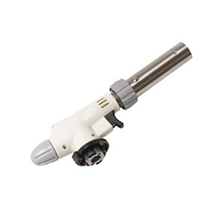
-
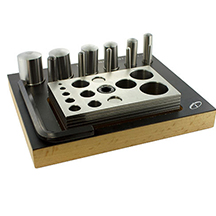
Disc Cutter
Used to punch discs out of metals. One set will be provided to share in every class. -
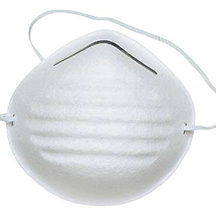
Dust Mask
A MUST if you want to drill shells and pearls. However, this is optional for classes with fumes such as etching and patinating. Classes that have a lot of dust do not require a mask, but it up to you if are you sensitive. (ie enameling.) Dust masks may be purchased at any hardware store. -
Enamel Kit
Items in this Enamel Kit including enamels will be provided for use during in person classes. Thus is considered optional. If you are interested in ordering a kit please click on the image. Enamel kit includes: trivet, sifter, Penny Brite, alundum stone, choice of one color kit, and Klyr Fire.
Jewel Tones
Earth Tones
Cool Tones

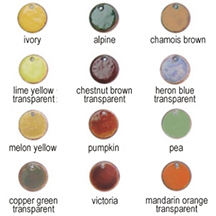
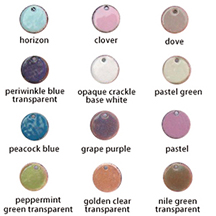
-
Fine Tweezers
Used for moving small parts. Classes requiring fine tweezers will not work with fire tweezers. These are a cheap investment. Please be bring some. Optional for most classes. -
Fire Tweezers
Used for handling hot metal. A must in soldering situations. Instructor will provide for every class needed. -
Hand Punch
1.25, 1.5, 1.8 mm. Used to make holes in metal. Please refer to class details for size needed. -
Hand Tools
Basic hand tools – Any quality is appropriate for my classes. These do not need to be high end or expense.
- Round nose - Typically it is preferred that the round nose be a fine tip. Especially for classes with detailed wire work.

- Chain/needle nose – Tapered jaws for general metal and wire work. Non-serrated are requested for all of my classes. Typically requested for classes to be used for opening and closing jump rings; in which case, 2 pairs are requested or a combination of chain nose and flat nose is suitable.

- Flat nose – Similar to chain nose but the jaws are not tapered. Non-serrated are requested for all of my classes.

- Round nose - Typically it is preferred that the round nose be a fine tip. Especially for classes with detailed wire work.
-

Magazine Pages
Magazine pages of any kind – Take your pick. Or just grab one of the programs at the show. -

Magnifier or Optivisor
– For almost all classes this is listed as an “As Needed” tool. If you have sight challenges it is recommended that you are properly prepared. For advance stone setting classes this is required! If you decide to use reading glasses consider better than 2.5x.
-
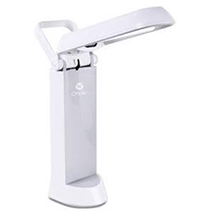
Ott Light or Task Lamp
This is optional item that is listed for every class. It is up to you to determine whether or not you will need to have one depending on your vision. -

#2 Paint Brush
Any small paint brush will work for these projects. A #2 brush was designated just to demonstrate that it needs to be small. Don’t bring a house painting brush! Just saying. This brush does not need to be expensive, a cheap disposable one will work.
IF a #2 flat brush is designated, again just looking for a smaller sized brush.
-
Rawhide/Leather Mallet
Shape and flatten metal without marring it. #2 mallet is a standard size. Instructor will provide for every class needed. A yellow nylon mallet may be used in its place, however a rubber one may not. -
Metal Ruler
6" metal ruler is preferred unless otherwise noted. A larger one will also work, however, it may be a little cumbersome. -

Scissors
Usually on the list for use of cutting paper patterns or the like. -
Side Cutters
Also known as wire cutters or snippers. For many of my classes I prefer Ultra Flush side cutters because it eases the workload. Ultra flush is the most flush you can buy as opposed to just flush cutters. If you don't own a pair of Ultra Flush cutters, you may want to invest in a good pair either Lindstrom or Swanstrom. There is usually not a different in price between ultra and just flush cutters so why not just buy the best? The image shows just a side cutter (top) and ultra flush (bottom). -
Student Files
Standard size is 2/o. For filing metal. . Instructor will provide to share for every class needed. -
Tripod with mesh
By using a tripod instead of soldering board you are reducing heat sink. Tripods are also used for torch fired enameling. Instructor will provide for every class needed. -
Two-hole draw down punch
This is different from a hand punch as it has 2 sizes in one tool. Instructor will provide to share (1 for every 2 people) for every class needed. -
Wood dap set
Used to dap metal to create a convex/concave shape in metal.


